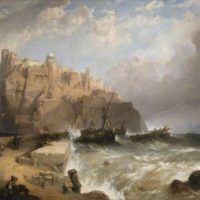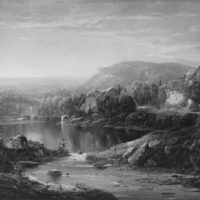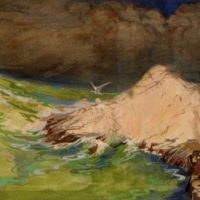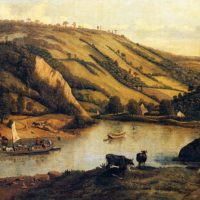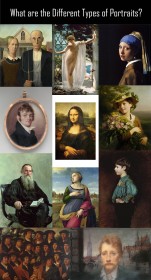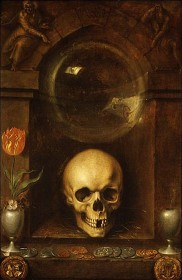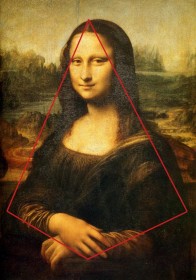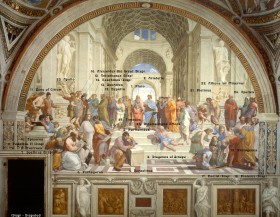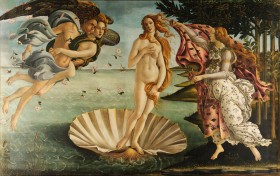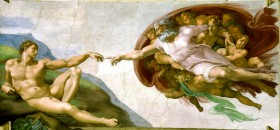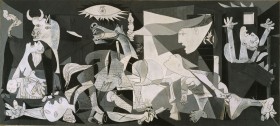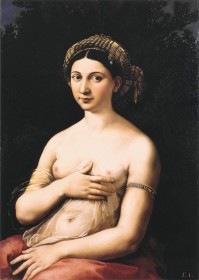If you have seen our rich gallery of portrait paintings, you might have seen many different types of portraits. There are portraits which includes people with different angles, numbers and settings. These variety of portraits aren’t just random compositions of people’s profile. Each and every setting, size are aimed for a predefined effect. According to the person or a group of people intended to be portrayed, the painter evaluates the needs by the person/group’s social importance, visual features, etc. and decides what type of setting, canvas size, theme, color-pallet and type of depiction should be used for the most desired portrayal. To differentiate and understand the varity of portraits, down here we have gathered all the major possible types of portrait painting from the renaissance era […]
Author Archive
Still life paintings are the least ‘happening’ paintings among other types of paintings like landscapes, portraits or history paintings as they don’t give you a quick reason to look twice at it. But, if you know that many artists have used still life paintings purely as a way to deliver their messages to the viewer in symbolic ways, a whole new level of curiosity opens up for you in the still life in which the inclusion of every object is deliberate and nothing is random. Though, as reminded in the previous post of the series, not every artist intends to insert symbolic meanings. Most still life paintings are made for the joy of the art itself. But, many of them do intend to add symbolism. […]
The first version of Massacre of the Innocents by Rubens was made in 1612. Here is represented the second version made in 1638, which resembles some similarities to the original while brutalizes some aspects even more than the first one. The subject matter and the scene is elaborately described in the first version’s iconography. The second version is painted after 25 years of the first one and it hasn’t lost its impact. Actually, Rubens has made it more intense and gruesome than the first one. More realistic approach than the first version In here, the emphasis is on the use of weaponry to kill infant. In the first version, soldiers were depicted in a moment in which they were killing either snatching the infants from […]
Jargons of the art-world part 5 brings ten more technical terms from the art world including the important ones like the golden ratio, tondo, pyramidal composition and Vincent van Gogh’s four square technique. 1. L’art pompier During the late 19th century, in French art schools and academies, most of the artists followed the then-popular art-style academism. But, there were some modern or artists with new mentalities who refused to paint only in the conventional academism or impressionism. They started to invent their own styles. By the other academic artists, they were started to be called as pompier to shun them down. The literal meaning of the term was Fireman and was used pejoratively towards the small bunch of painters who tried “something new”. There happened to be lots […]
Athens is the largest city in Greece and has been respected as one of the important cities in the Greek history. It was epicenter of arts and philosophy in Greece and thus many big minds had gathered in the city time to time. Big philosophers like Plato and his student Aristotle were active in the city in their times. Athens has been the pivotal point in the Greek history and has seen the presence of the greatest minds of the country. Here, Raphael has smartly included all the big figures from the Greek history in a “school” which could represent the Greece’s history, Greece or the city of Athens where these great minds came across at least for once in their lifetime. Convergence of Great […]
There are total of 58 human figures, 2 main sculptures and 2 books in the painting. Though, out of them only 21 figures are totally or partially identified. Both sculptures and books are recognized correctly. Moreover, the artist Raphael has painted the ancient geniuses in form of his contemporary artists who were considered the greatest minds of renaissance time. The names written in bracket are those contemporary artists. Here is a list of all the recognized figures in the painting: Plato (Leonardo da Vinci) : Greek philosopher, mathematician, Student of Socrates, founder of Academy in Athens during 424/423 BC – 348/347 BC Aristotle (Giuliano da Sangallo) : Greek philosopher, Student of Plato, Scientist, Thinker, Teacher of Alexander the Great, Writer of Nicomachean Ethics during 384-322 […]
The Birth of Venus is equally famous work of Sandro Botticelli with Primavera. It simply depicts the moment of the birth of the love-goddess Venus in renaissance era style. It holds a much lesser approach of the renaissance era’s masculine and somewhat three-dimensional depictions. The painting seems more linear and flat in comparison to the other famous works from the same era. In Roman mythology Venus (Aphrodite in Greek mythology) is the goddess of divine love, sex, beauty, seduction and all the persuasive feminine aspects. She symbolizes the intellectual and physical love, attractions. Sometimes she is referred as the heavenly goddess of intellectual love and at many places she is said to be the earthly goddess of physical love or sex. Myth of Birth of […]
The Creation of Adam is a part of the Sistine Chapel ceiling fresco created by Michelangelo. It is the most famous part of the whole ceiling. The depiction represents God accompanied by angles giving the ‘touch of life’ to Adam. It is a visual representation of the event from the Book of Genesis when on the sixth day, god created Adam, eve and other flora and fauna. Story of Creation of Adam and Eve According to the Book of Genesis (the first book of the Hebrew Bible), God first created Adam on the sixth day. He put him in the Garden of Eden and went away to create other things like animals, trees, rivers, etc. (including trees of knowledge and life). Then after he brought […]
Guernica is a well-appraised painting by the acclaimed artist Pablo Picasso. This mural sized painting was artist’s reaction to the real life bombing on the town of Guernica in Spain during the Spanish Civil War in 1937. The painting and its world-tour during the year helped largely to bring the world’s attention towards the ongoing civil war and its harsh consequences. Today, the painting has become the anti-war symbol. According to some reviewers, the painting was the greatest accomplishment of Picasso’s career for its impacts on the world about the bombing. Picasso and his fellows pushed Cubism ahead with entirely accepting the art-movement and the represented art is a piece of cubist art. The Real Guernica Bombing Bombing of Guernica happened on 26th April, 1937. […]
La fornarina was a skillful depiction by high-renaissance artist Raphael. It resembles with Leonardo’s Mona Lisa in terms of the posture, use of the model and the alleged idea behind the portrait. It also includes some elements of popular painting style Chiaroscuro which Raphael borrowed from Caravaggio. La Fornarina, Raphael’s Mistress It is said that the model seated for the portrait was Raphael’s real life model called Margarita Luti. The title of the painting means “the baker’s daughter”. According to Giorgio Vasari, the renaissance period art historian, Raphael was “a very amorous man’ and often looking for ‘amorous pleasures’. Allegedly, during his life he had many mistresses one after another, including daughters of his patrons. Margarita Luti appeared in Raphael’s another portrait La Velata as […]




